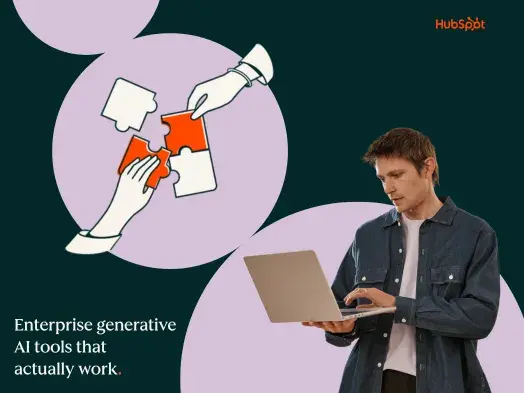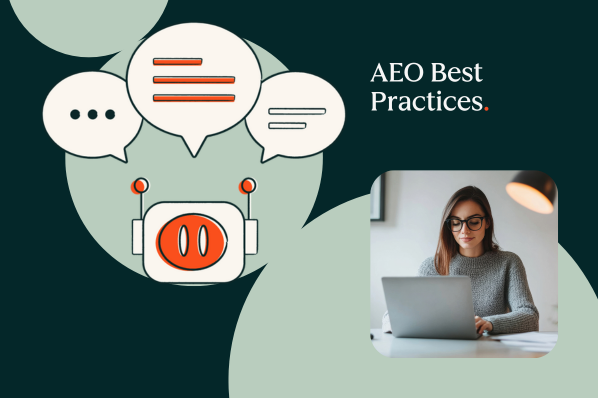In the latest episode of Marketing Against the Grain, Emmy Jonassen, VP of Marketing for Demand Generation at HubSpot, and I walk you through this exact experiment — and the lessons we learned along the way.
The Hypothesis: Using AI for Unstructured Data Analysis
Given AI’s particular effectiveness at interpreting unstructured data, such as free-form text in chat interactions, we hypothesized that integrating AI into our chat system would improve the customer experience by providing faster and more precise responses.
We also believed that this strategy would free up our human agents to focus on more complex inquiries and high-intent customers.
As Emmy explained during the episode, "If we could use AI to truly understand what people are looking for and be able to answer their questions when they come to our website, we anticipate meaningful improvement in user satisfaction."
But we still were unsure about how significant these improvements would be — and whether AI would be able to capture the personable, empathetic tone of our support teams.
The Set-Up: Choosing Our Test Pages and KPIs
To set up the experiment, we first decided to integrate the AI chatbot on webpages with high traffic and lower risk.
"This would allow us to test, gather data, and iterate very quickly, without significantly disrupting the user journey," Emmy explains.
Our knowledge base pages, where customers ask practical, straightforward questions, were the ideal candidates.
We then determined our key performance indicators (KPIs):
- Conversion rates: are we providing people with the information that they're looking for, as fast as possible and as relevant as possible?
- Value per chat: how much benefit are we gaining from each chat interaction, e.g., lead qualification, customer retention?
- Customer satisfaction (CSAT) score: is the chatbot delivering a positive, personalized user experience?
With these details in place, we were ready to launch our AI experiment and track its impact on customer interactions.
AI Chatbot Experiment Adjustments and Results
After launching the first AI chatbot, we initially saw a decline in CSAT scores — but this was more or less expected, as the model was new and needed training.
To improve this, a team member (shout out to David G.!), began manually annotating chat transcripts to improve the AI's responses, editing each one to be more accurate and contextually relevant based on the users’ questions.
By the end of the experiment, the results were impressive:

- 43% increase in conversion rates
- >50% improvement in the value per chat
- CSAT scores matched human-led interactions
While both the conversion rate and value per chat were exciting, the CSAT score was a game-changer. "Any time you can get automation on par with a human experience, that is a huge win," says Emmy.
Given the positive results of the experiment, we felt confident about integrating the AI chatbot onto other pages with different intents.
AI Chat Test Next Steps and Thinking Ahead
Our next major AI chat test is now happening on the pricing page.
Here, the AI chatbot has been trained to not only handle product-related questions — but also to help prospective customers understand our packages and pricing, even enabling touchless purchases in some cases.
While we’re still testing and analyzing, we’re very excited to see the final results and expect similar, if not better, outcomes.
We’re also hard at work developing an annotation user interface that allows more team members to participate in training the AI model.
"The annotation piece is really one of the most important pieces through all of this," says Emmy. "But it’s also the most time-intensive." So by involving more people in this process, we aim to speed up the AI’s training and improve the accuracy of our chatbot even further.
4 Tips for Using AI to Improve the Customer Experience
While the sheer volume of AI technologies can be intimidating, it’s critical for marketing leaders to stay current with these advancements and begin implementation now.
To learn how to incorporate AI into your workflow, download our AI Guide for Marketers and follow the tips and insights below.
1. Start experimenting now.
"Get your AI experiment to a good enough place, get it out in the wild, and then iterate based on real-world feedback," Emmy says. "That’s where you’ll see the magic start to happen."
While it may be tempting to aim for perfection, this will delay your progress and put you behind the competition. Put those concerns aside and get started now.
2. Aim for dramatic results.
There are still marketers who are optimizing for a 5% improvement. Those days are over. AI gives you the ability to build entirely new systems, programs, and automation that get you 100%, 300%, even 500% gains.
The potential for exponential improvement is there, and the opportunity cost of settling for minor gains is too high.
3. Be transparent with customers.
We made a choice early on at HubSpot to be 100% transparent that customers are speaking with an AI assistant in chat.
AI transparency builds trust and helps manage user expectations, which again improves customer satisfaction. This transparency can also help mitigate any potential concerns about privacy or data usage.
4. Start with chat.
If you’re really not sure where to start, I always say that chat is a great, low-stakes option. AI chatbots are key for curating a seamless user journey by giving users exactly what they need and, as we demonstrated in our experiment, can be tested without drastically interrupting the user experience.
To watch our entire discussion about our AI experiment, check out the full episode of Marketing Against the Grain below:
This blog series is in partnership with Marketing Against the Grain, the video podcast. It digs deeper into ideas shared by marketing leaders Kipp Bodnar (HubSpot’s CMO) and Kieran Flanagan (SVP, Marketing at HubSpot) as they unpack growth strategies and learn from standout founders and peers.
Artificial Intelligence


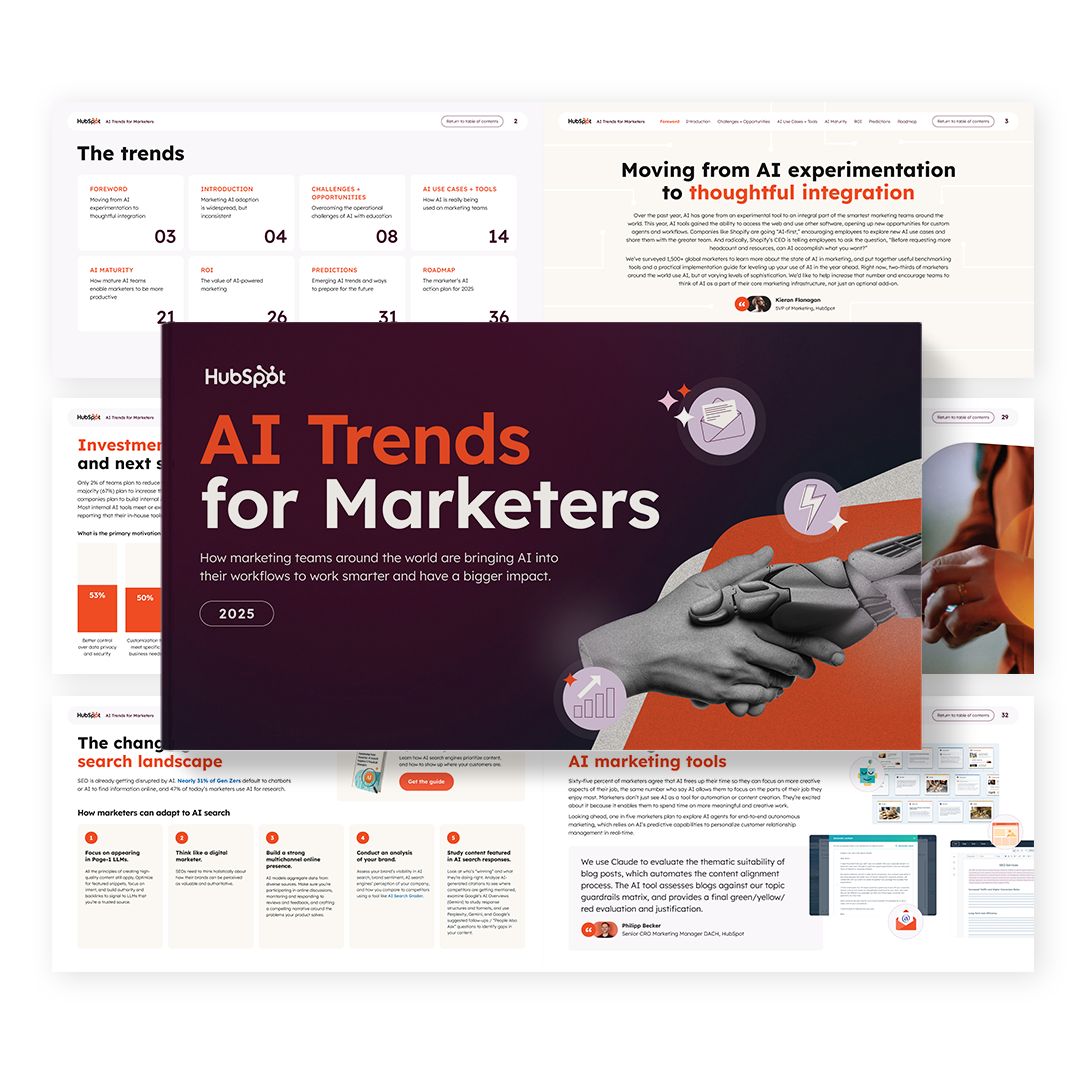
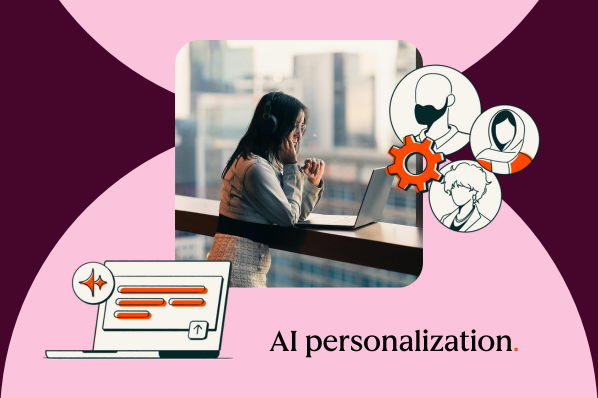
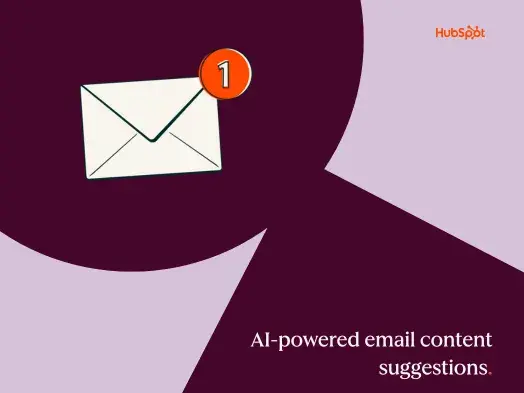

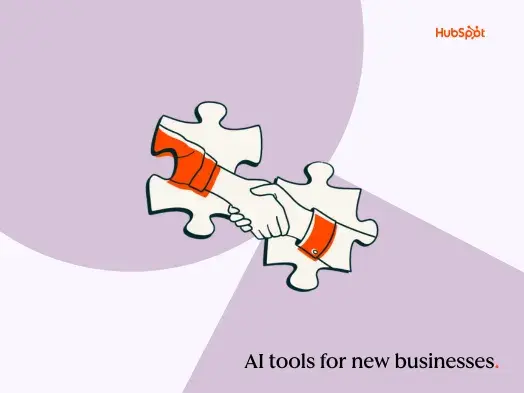
![AI email subject lines that drive 3x more revenue and actually convert [+ exclusive insights]](https://53.fs1.hubspotusercontent-na1.net/hubfs/53/ai-email-optimization-1-20251014-4500151-1.webp)
